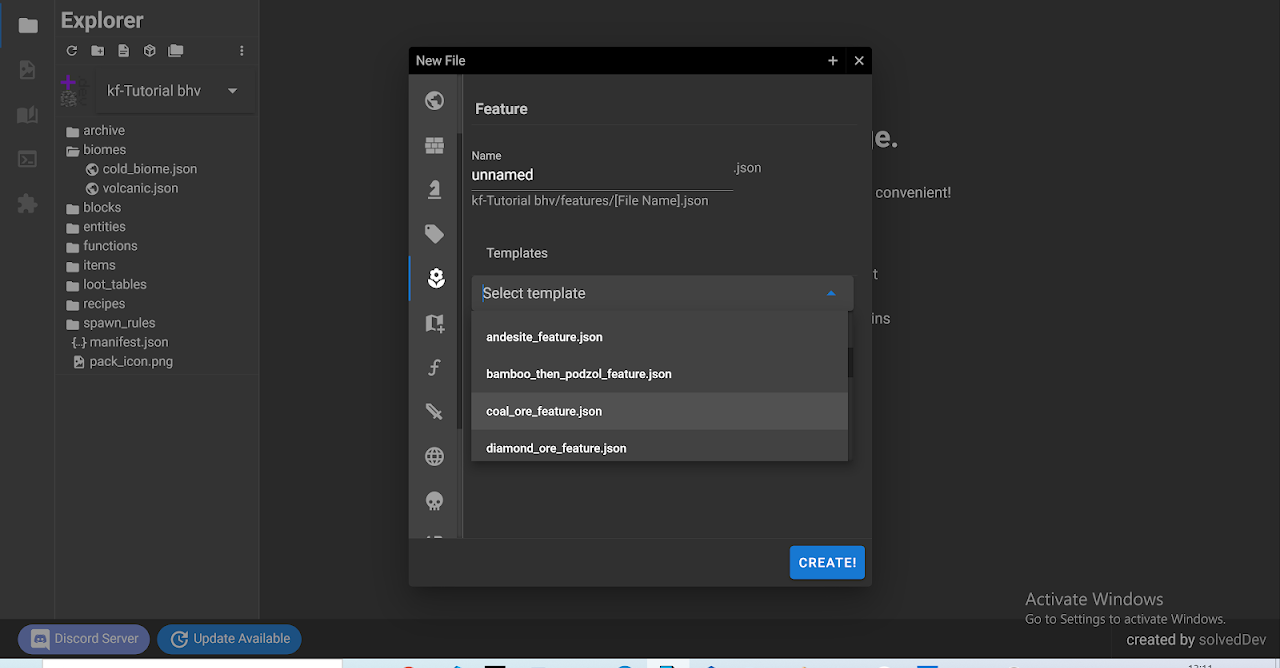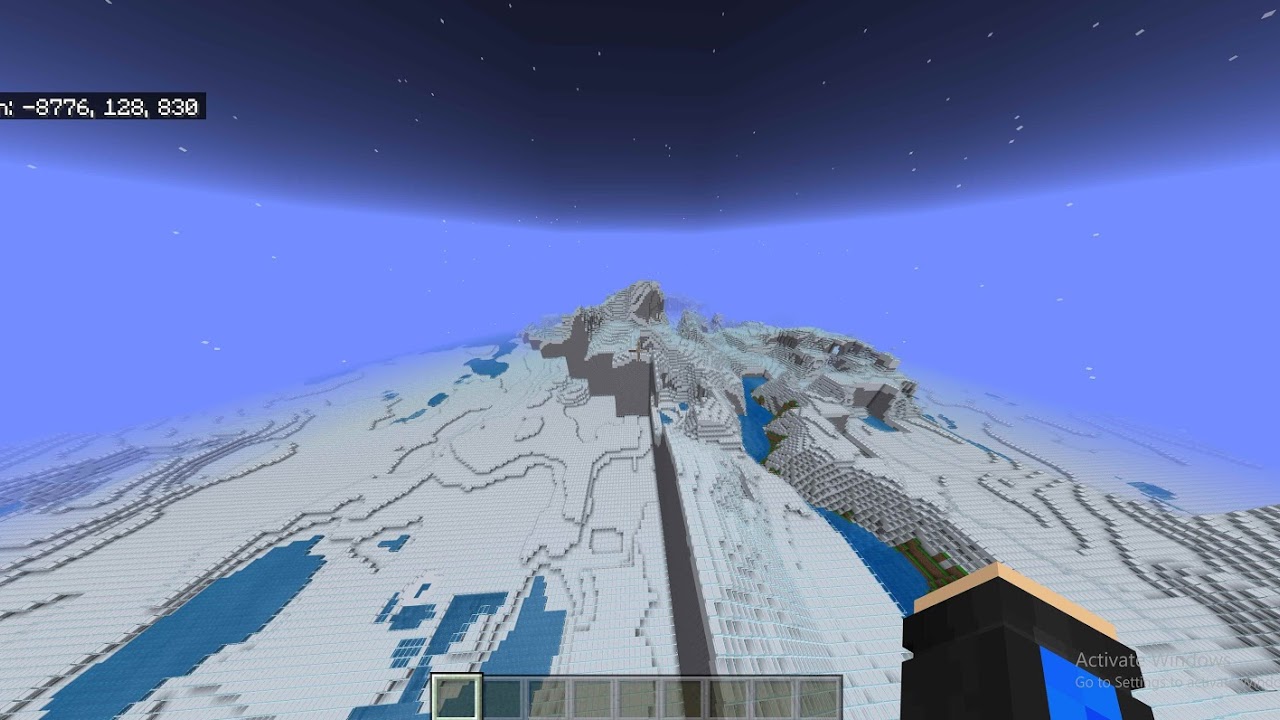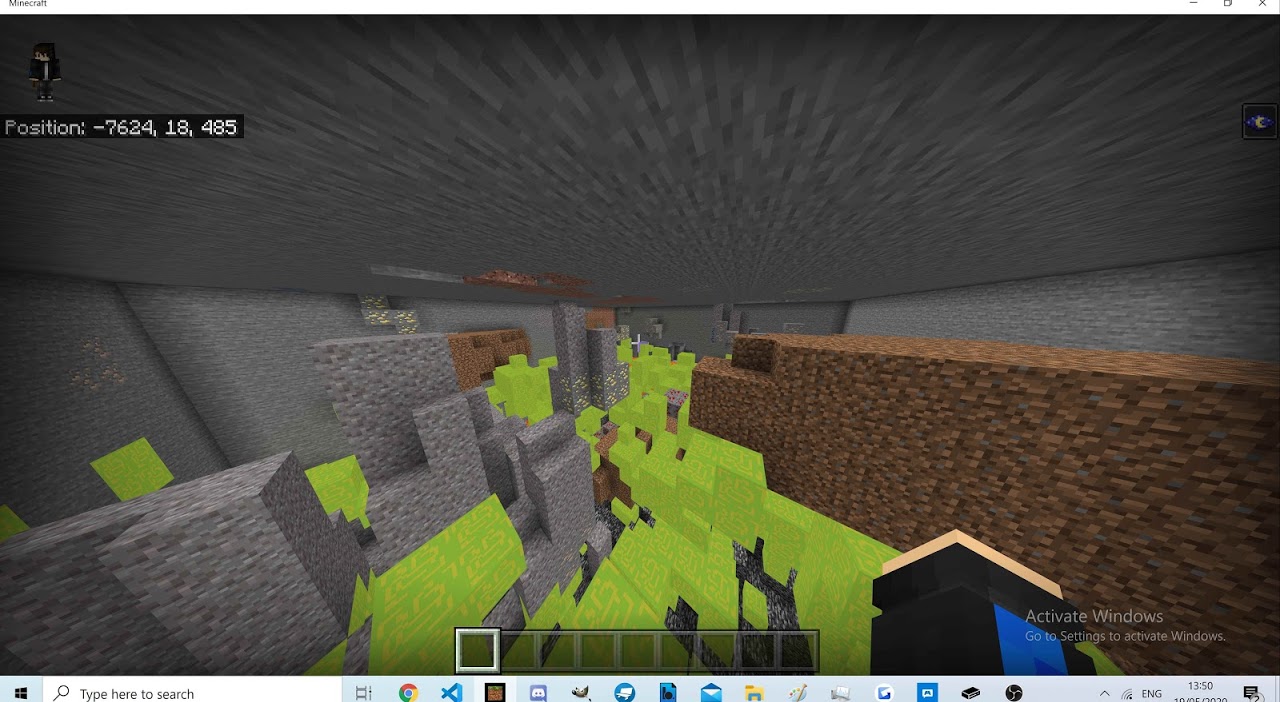Intro to World Generation
WARNING
This page is somewhat out-dated, and contains limited information. For the most up-to-date and comprehensive information, view the other pages in this section.
You can change the world's generation via Add-ons. The needed folders in the Behavior pack for these are:
structures, features, feature_rules and biomes. It's quite self-explanatory: you can store your .mcstructure files from (or for) structure blocks in structures, biome files in biomes, terrain features, like ores, in features and the rules for their generation in feature_rules. Let's go over adding a custom biome first.
Note: it might be easier to create biomes using bridge., a Visual software for Add-on creation (also linked in Links and Contact), since the official Documentation is rather incomplete. You can also generate all example files of vanilla biomes, features and feature rules for reference, like shown here:
 Generating a coal_ore feature using bridge.
Generating a coal_ore feature using bridge.
However, bridge. is not required.
Custom Biomes
{
"format_version": "1.13.0",
"minecraft:biome": {
"description": {
"identifier": "cold_biome"
},
"components": {
"minecraft:climate": {
"downfall": 0.7,
"snow_accumulation": [0.6, 0.9],
"temperature": 15.0
},
"minecraft:overworld_height": {
"noise_params": [0.6, 0.9]
},
"minecraft:surface_parameters": {
"sea_floor_depth": 7,
"sea_floor_material": "minecraft:blue_ice",
"foundation_material": "minecraft:cobblestone",
"mid_material": "minecraft:minecraft:concrete",
"top_material": "minecraft:glass",
"sea_material": "minecraft:water"
},
"minecraft:overworld_generation_rules": {
"generate_for_climates": [
["medium", 100],
["warm", 100],
["cold", 100]
]
},
"cold_biome": {}
}
}
}- Set
format_versionto 1.13.0: it's the latest biome file version as of the current release. descriptiontakes only one value:identifier. This requires NO namespace and MUST be the same as the file's name. (If you do use a namespace, for examplewiki:cold_biome, the file name needs to only match the id, so it has to remain ascold_biome.json.componentsis just what you'd expect: something applied to the biome at default. let's look through them:minecraft:climatecontrols everything climate-wise.downfallis how often it'll be raining or snowing. 0.0 is for absolutely no rain (like a desert) and 1.0 should mean constant rain.temperatureis used to define things like water freezing and rain turning into snow.
You can generate default biome files for reference using bridge.
overworld_surfacecontrols blocks generated.floor_depthis how deep down lakes and rivers go in blocks.sea_floor_materialdefines the material to be used when generating the river and lake's floor.foundation_materialis the material to be used approximately between y=5 and y=50. For a desert, for example, it's stone.sea_materialis the material used as show liquid in lakes, rivers, oceans, etc. For example, in all Overworld biomes, this is set to "minecraft:water".top_materialdefines the material for the highest level. E.g for Plains it's grass.mid_materialis the layer between 'top' and 'foundation'. For Plains it's dirt.overworld_heightdefines how the Biome will look terrain-wise.
DO NOT use both noise_type and noise_params at the same time. noise_params is an array of the top level of noise and the lowest level of noise allowed in the biome.
 A non-smooth transition between the same biome, generated with noise_params as [0.1, 0,1] and then [1.0, 1.0].
A non-smooth transition between the same biome, generated with noise_params as [0.1, 0,1] and then [1.0, 1.0].
- If you want to use
noise_type, however, you will be presented with a few pre-generated types of noise. You will probably know how some of them look from the Vanilla game. Here's the list:
beach, default, extreme, taiga, ocean, mountains, default_mutated, deep_ocean, lowlands, less_extreme, stone_beach, swamp, river, mushroom.
minecraft_world_generation_rulesis the most important component of all, especially thegenerate_for_climatesarray. Basically, there are three climates in the game: "warm", "medium" and "cold". They are randomly thrown around every world when it's created [hard-coded]. Now, you can choose how often your custom biome will generate in every specific climate. If you do not provide anything in here, the default value is 0 for every climate, and the biome won't generate. In the example, the weight (the smaller the number, the smaller the chance of this biome generating instead of a vanilla one in the climate) for every climate is set to 100 for testing purposes: that makes the biome generate almost everywhere in the Overworld. Once I'm done with testing, however, I'll balance the weight how it's supposed to be. For example, the Vanilla desert has the weight of 3 for warm.This component also takes Objects such as:
hills_transformation,mutate_transformation,shore_transformation,river_transformation, but their meaning is unclear to me. Contributions are always appreciated. Same goes for thesurface_meaterial_adjustmentscomponent.And, last but not least, BIOME TAGS! They're very simple, but useful. You can set however many of the vanilla or custom tags you want, by adding them in this format in
components:
"tagName": {}Then, you can test for your tag in environment_sensors, filters, has_biome tests, spawn rules, and more.
Your custom biome is now complete!
Features and Feature Rules
Note: in v.1.15Beta, it is possible to use .mcstructures from the structures folder instead of features to generate custom structures with feature_rules. More on that after the update arrives.
Features and Feature Rules are used to generate everything from ores to grass and flowers, vegetation to granite or clay patches. It is even possible to create custom structures using those, but as it is very grindy and will be much easier after the mentioned update, we won't talk about it just yet.
Now, it's worthwhile to mention that the easiest way to generate Custom Structures is this auto generator by MACHINE_BUILDER, you should note that this tool has a free version with limited functionality and to enjoy the full functionality use the payware version. However, we'll still learn some other manual feature generation here, because some things like Ores are much more efficient to generate as ore_features and not structure_template_features.
Let's make our wiki:blocky custom block generate as an ore for the tutorial's sake. I'll do it the easy way, like this:
- Open bridge., choose your Add-on.
- Add new file>features>diamond_ore and Add new file>feature_rules>diamond_ore.
- Now I'll save the files and open them in my Code Editor and make the necessary modifications.
You could've easily just written the files from scratch or copied them from somewhere without using bridge. in case you are having trouble installing it. One place to find the Vanilla Files are the Example Packs, another, a more complete one is bridge.'s repository.
Features
Features are located in BP/features and are basically a group of blocks stored in the game's files, which can be placed with a feature_rule. The file name of a feature must match the identifier as well.
You can find their Documentation on bedrock.dev/r/Features
{
"format_version": "1.13.0",
"minecraft:ore_feature": {
"description": {
"identifier": "blocky_ore_feature"
},
"count": 8,
"places_block": "wiki:blocky",
"may_replace": [
{
"name": "minecraft:stone",
"states": {
"stone_type": "andesite"
}
},
{
"name": "minecraft:stone",
"states": {
"stone_type": "andesite_smooth"
}
},
{
"name": "minecraft:stone",
"states": {
"stone_type": "diorite"
}
},
{
"name": "minecraft:stone",
"states": {
"stone_type": "diorite_smooth"
}
},
{
"name": "minecraft:stone",
"states": {
"stone_type": "granite"
}
},
{
"name": "minecraft:stone",
"states": {
"stone_type": "granite_smooth"
}
},
{
"name": "minecraft:stone",
"states": {
"stone_type": "stone"
}
}
]
}
}minecraft_ore_featureis type of the specific feature that places ores automatically. Each feature type has it's own specific syntax. (There's alsosingle_block_featurethat places a single block instead of an ore group, etc)identifierdoesn't require a namespace in this scenario. The namespace is optional, and is not to be added in the filename.countis how big the ore "cluster" will be at maximum, or how many actual ore blocks will generate together.places_blocktakes the identifier of the block to be placed as the value.may_replacetakes all the blocks that the feature can replace as arguments. If it generates over one of the blocks not included in here, the block will remain where it was without being replaced.
Feature Rules
Feature Rules control where and how features (and, in the future, structures) are placed.
{
"format_version": "1.13.0",
"minecraft:feature_rules": {
"description": {
"identifier": "overworld_underground_blocky_ore_feature",
"places_feature": "blocky_ore_feature"
},
"conditions": {
"placement_pass": "underground_pass",
"minecraft:biome_filter": [
{
"any_of": [
{
"test": "has_biome_tag",
"operator": "==",
"value": "overworld"
},
{
"test": "has_biome_tag",
"operator": "==",
"value": "overworld_generation"
}
]
}
]
},
"distribution": {
"iterations": 100,
"coordinate_eval_order": "zyx",
"x": {
"distribution": "uniform",
"extent": [0, 16]
},
"y": {
"distribution": "uniform",
"extent": [0, 16]
},
"z": {
"distribution": "uniform",
"extent": [0, 16]
}
}
}
}descriptionidentifierneeds no namespace, but the filename needs to match.places_featuretakes the identifier of the feature that is controlled by this rule as the value.
conditionsplacement_passHOW the feature will be passed.biome_filtertests for biome tags where the feature will generate, exactly as a spawn rule.
distributioniterationsbasically chance. I set mine to 100 to make it generate everywhere, but for a diamond_ore, this is set to 1.- The next four components show in which directions the ore will be 'dragged' towards. Needs more clarification
The easiest way to test wether your ores generated is /fill ~15 ~5 ~15 ~-15 ~-15 ~-15 air 0 replace stone using this command at a low y level. it'll keep everything BUT stone in the selected area, like this:

And yes, 100 as "iterations" is definitely waaay too much 😉
It's a good idea to proceed checking out other feature and feature_rule vanilla files to learn further techniques. However, the ones you were just walked through are enough to create most of what needs to be generated.
Custom Structures
As of MCBE v1.16.20, Custom Generated structures are possible. A simple way to generate Structures is this auto generator by MACHINE_BUILDER, mentioned earlier. It generates all three of the required files for your structure: feature_rules/mystructure.feature_rule.json, feature_rules/mystructure.feature.json and structures/mystructure.mcstructure. You can learn more about defining .mcstructures with Structure Blocks in Minecraft itself here.
Now that you have your .mcstructure, time to write your feature and feature rule. The last is the same as with ores (see the beginning of this article). Let's continue to the Feature.
- Remember that the namespace is not required and that the filename must match the identifier, excluding the namespace. So if you have a feature rule with the identifier
wiki:myfeatureruleor simplymyfeaturerule, the file name can be bemyfeaturerule.jsonin both cases.
Here's an code example from the Features Documentation:
{
"format_version": "1.13.0",
"minecraft:structure_template_feature": {
"description": {
"identifier": "wiki:hot_air_balloon_feature"
},
"structure_name": "wiki:hot_air_balloon",
"adjustment_radius": 8,
"facing_direction": "random",
"constraints": {
"unburied": {},
"block_intersection": {
"block_whitelist": ["minecraft:air"]
}
}
}
}structure_nameis the structure's identifier, the one you saved via a Structure Block.
That's pretty much it! Now you're able to generate your own custom Structures in the world.
Your Progress So Far
What you've done: